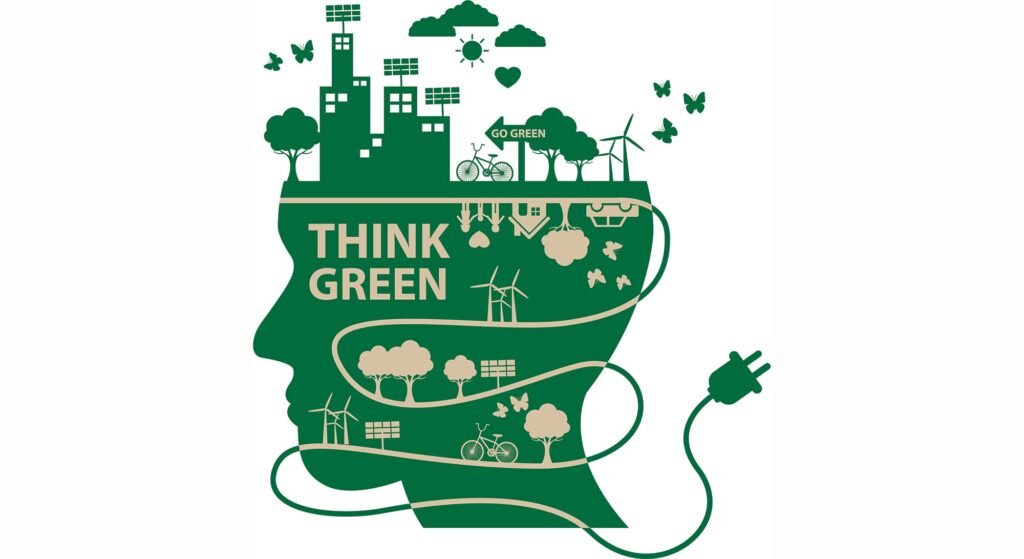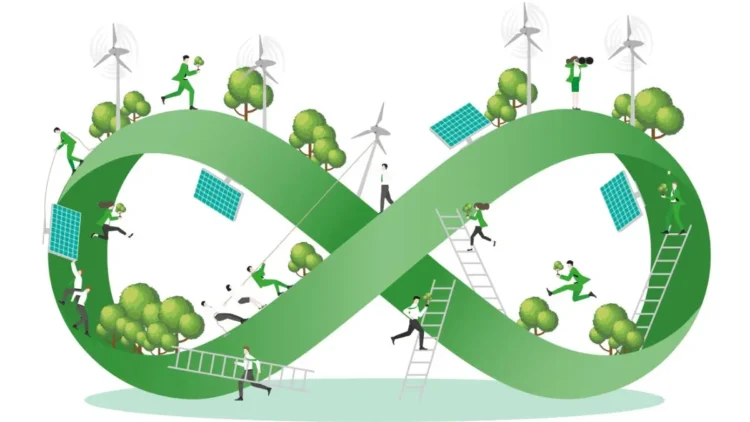Environmental sustainability means protecting nature, conserving resources, and ensuring a healthy planet for future generations.
Environmental sustainability refers to the responsible use and management of natural resources to meet present needs without compromising the ability of future generations to meet their own. It means maintaining the balance between human development and ecological preservation. The idea is simple — use the earth’s resources wisely and leave enough for those who come after us.
Environmental sustainability is the foundation of a balanced future. It promotes responsible use of resources, renewable energy, waste management, and biodiversity conservation. By adopting sustainable habits in daily life, industries, and governance, we can ensure harmony between people and nature.
Meaning
At its core, environmental sustainability means living in harmony with nature. It focuses on reducing pollution, conserving energy, and protecting ecosystems. Every natural element — air, water, soil, plants, and animals — plays a vital role in maintaining the planet’s balance. Sustainability ensures that human actions do not disturb this balance.
When industries produce goods responsibly, when farmers grow crops using eco-friendly methods, and when citizens manage waste properly, the planet becomes healthier and more resilient. Environmental sustainability teaches us that economic growth and environmental protection can coexist — if guided by awareness and responsibility.
***
The Three Pillars of Sustainability
Environmental sustainability is one of the three pillars of sustainable development — the other two being economic and social sustainability. Together, they ensure a balanced and long-term approach to development.
- Environmental – Protects natural resources and biodiversity.
- Economic – Encourages responsible production and consumption.
- Social – Promotes equality, education, and healthy living conditions.
Ignoring one pillar weakens the entire system, which is why sustainability must be pursued as a whole.
***

Applications of Environmental Sustainability
1. Renewable Energy
Replacing fossil fuels with renewable energy sources such as solar, wind, and hydropower is a major step toward sustainability. Renewable energy reduces carbon emissions and helps fight climate change. Countries are increasingly investing in green energy to meet their power needs responsibly.
2. Waste Management
Effective waste management — through recycling, composting, and reusing — prevents pollution and conserves resources. Simple actions like separating biodegradable and non-biodegradable waste at home contribute to a cleaner environment.
3. Water Conservation
Freshwater is limited, and conserving it is critical. Using drip irrigation in agriculture, fixing leaks, and harvesting rainwater are practical steps that support sustainability.
4. Sustainable Agriculture
Sustainable farming avoids harmful pesticides, promotes soil health, and conserves biodiversity. Organic farming and crop rotation are good examples. These methods improve productivity without harming nature.
5. Green Buildings
Buildings designed with energy-efficient materials, natural lighting, and water-saving systems reduce environmental impact. Green architecture is now a key part of urban sustainability planning.
6. Corporate Sustainability
Companies today are integrating sustainability into their operations and supply chains. By measuring carbon footprints, reducing waste, and supporting community projects, they contribute to long-term ecological balance.
***
Significance of Environmental Sustainability
1. Protecting Biodiversity
Every species has a purpose in nature’s web. Unsustainable practices destroy habitats and endanger species. Sustainability ensures that biodiversity thrives, which keeps ecosystems functional and resilient.
2. Combating Climate Change
The rise in global temperature is one of the biggest challenges of our time. Sustainable practices — like reducing carbon emissions and increasing forest cover — help slow down global warming and protect vulnerable communities.
3. Ensuring Resource Availability
Natural resources like forests, minerals, and water are finite. Sustainability teaches us to use them wisely, ensuring future generations can enjoy the same benefits.
4. Improving Human Health
Clean air, safe drinking water, and toxin-free food directly improve human health. A sustainable environment reduces diseases caused by pollution and poor sanitation.
5. Supporting Economic Growth
Sustainability also makes economic sense. Green jobs in renewable energy, recycling, and eco-tourism create new employment opportunities. Sustainable economies are more resilient to crises.
***
Individual Responsibility
Every individual has a role to play in protecting the planet. Turning off lights, reducing plastic use, planting trees, and choosing sustainable products make a big difference when practiced collectively. Awareness and education are the keys to promoting sustainable behavior.
You Learn
Environmental sustainability is not a choice but a necessity. It ensures that nature and humanity can thrive together. Governments, businesses, and individuals must collaborate to protect the earth’s resources. The future of our planet depends on the actions we take today. A sustainable world is not built overnight — it is created through consistent, conscious, and collective effort.
(India CSR)





